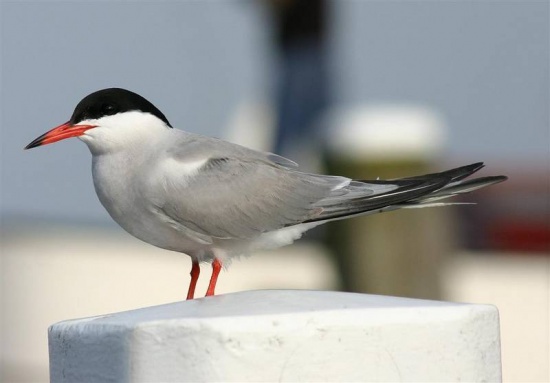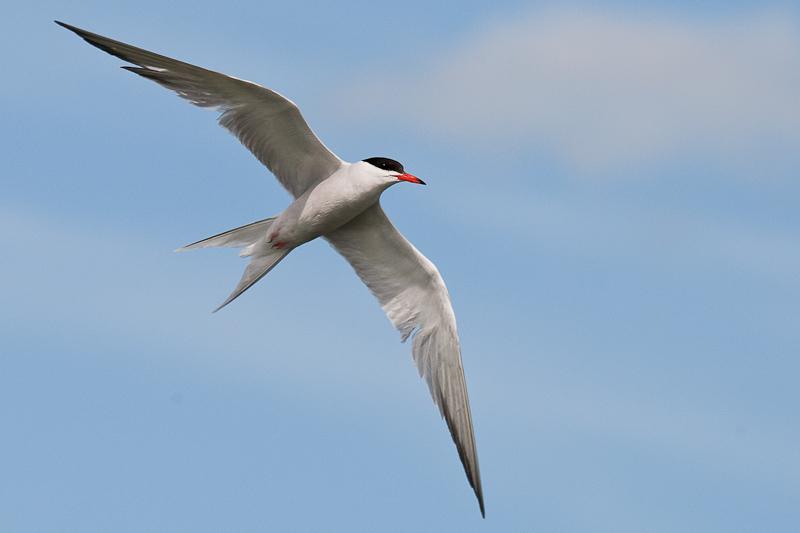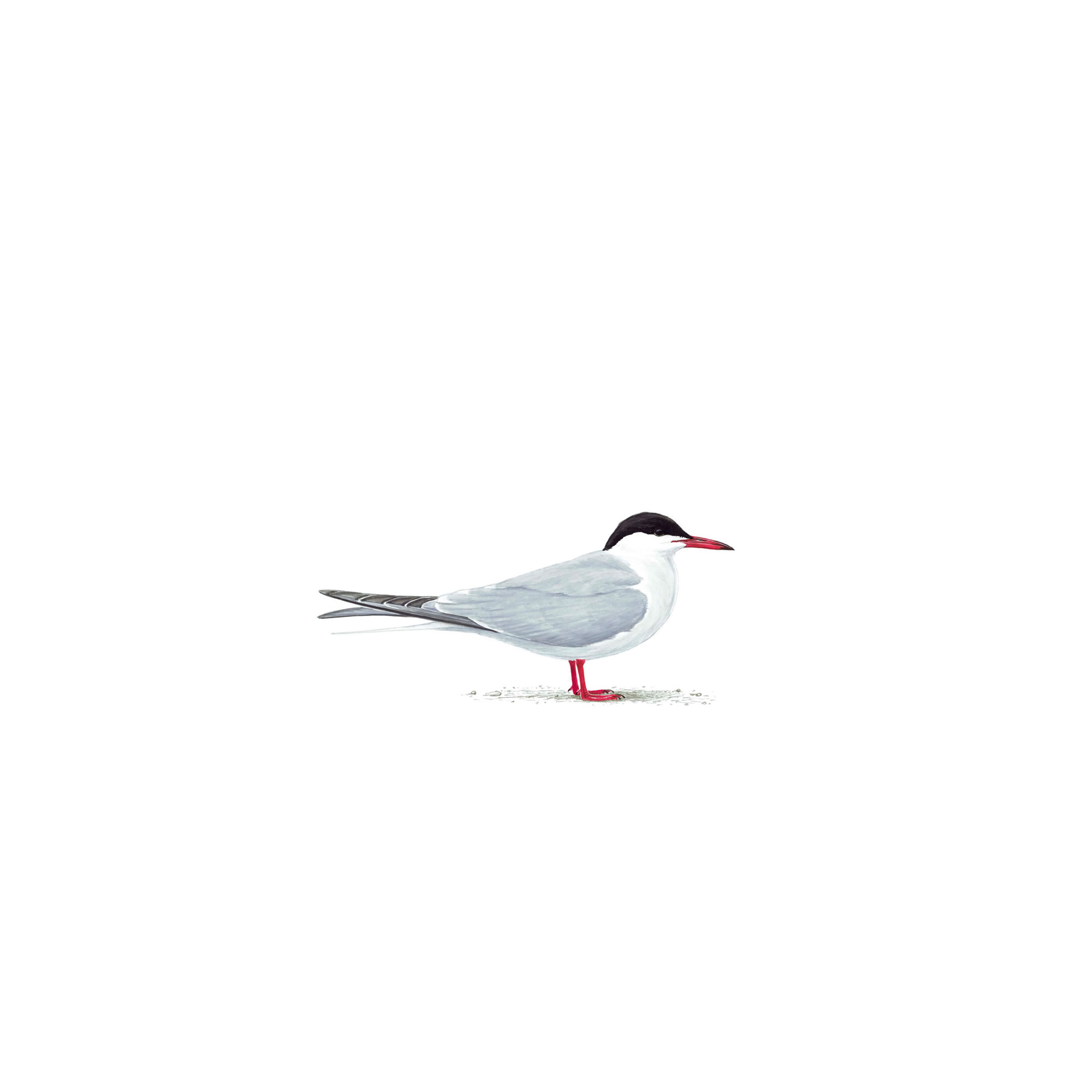
Sterna hirundo
SUBFAMILY
Sterninae
TAXONOMY
Sterna hirundo Linneaus, 1758, Sweden. Four subspecies usually
are recognized.
OTHER COMMON NAMES
French: Sterne pierregarin; German: FluЯseeschwalbe: Spanish:
Charrбn Comъn.
PHYSICAL CHARACTERISTICS
12.6–15.4 in (32–39 cm), 0.2–0.3 lb (100–130 g). Typical small
tern with black cap; white neck, throat, and belly; and gray
back and upperwings. Breast sometimes suffused with pink at
start of breeding cycle. Bill red with black tip in breeding season.
Outer five primaries have dark outer webs. Nonbreeding
adult has white forehead, crown black with white streaks. Juvenile
is gray above barred with dark gray or brown. Black
carpals distinctive in juvenal and non-breeding adult plumages.
DISTRIBUTION
Breeds in north temperate to subarctic zones in North America,
Europe, and Asia, winters along coasts of Central and
South America, both coasts of Africa, in coastal India and
around coastal islands of Pacific (including around Australia).
HABITAT
Breeds in coastal and inland areas on sandy barrier beaches, in
vegetated inter-dune areas, on rocky, sandy, or shell islands, on
piers, and on seacliffs. Winters on coastal estuaries and up
large rivers. Adapted to nesting on piers and other artificial
sites and to feeding on jetties and piers.
BEHAVIOR
Diurnal; territorial during breeding season.
FEEDING ECOLOGY AND DIET
Feeds mainly on small fish obtained by plunge-diving. May
also eat crustaceans, insects, and fish offal. Feeds in dense
flocks in ocean, often with other terns and over predatory fish
that force bait fish to the surface. Near colony, some common
terns engage in piracy (both of conspecifics and other terns).
REPRODUCTIVE BIOLOGY
Lays mainly May through June. Usually colonial, although it may
nest solitarily or in very small, loose colonies. Often nests with
other terns or skimmers, frequently near vegetation for protection
from weather or predators. Both sexes defend territory, incubate
the eggs, and care for chicks. Lays three eggs. Incubation
period 22–28 days. Fledging period 24–28 days, with extended
parental care. Few breed at two years, most at three years.
CONSERVATION STATUS
Not threatened. Extensively impacted by millinery trade in late
1800s; often whole birds were used on hats. Some colonies still
exposed to egging, and birds are eaten in some places. Coastal
colonies vulnerable to development, and foraging birds exposed
to contaminants and oil pollution. Also vulnerable to increases
in predators associated with humans (dogs, cats, foxes, raccoons)
and to tidal flooding.
SIGNIFICANCE TO HUMANS
Once heavily egged, and still egged by humans for food in
many places. Often used by fishermen to indicate schools of
predatory fish and to indicate presence of land.
Photo Gallery of - Common tern




 Animalia Life
Animalia Life